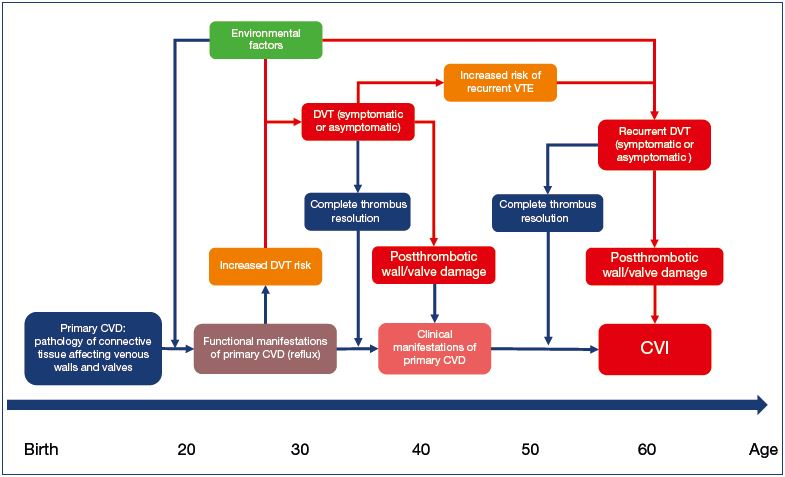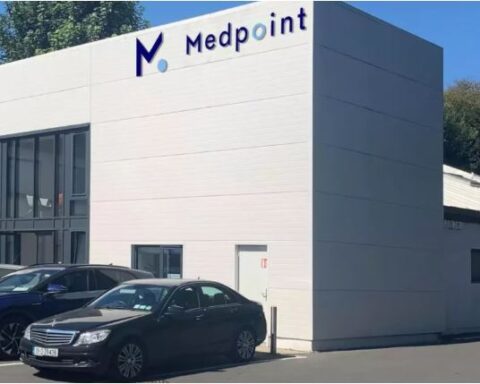Chronic deep venous thrombosis affects thousands of people across Houston and surrounding areas, causing persistent leg pain, swelling, and potentially serious complications when left untreated. Unlike acute blood clots that form recently, chronic DVT involves clots that have been present for one to two months or longer, making treatment more complex and requiring specialized medical intervention.
Understanding your treatment options can help you make informed decisions about managing this condition and improving your quality of life. Houston offers access to advanced medical facilities and specialized care that can effectively address chronic DVT and its complications.
This comprehensive guide explores the various treatment approaches available for chronic DVT, helping you understand what to expect and how to navigate your healthcare journey in the Houston area.
What Makes Chronic DVT Different from Acute DVT?
Chronic deep venous thrombosis develops when blood clots in deep veins remain present for extended periods. Over time, these clots undergo significant changes that distinguish them from fresh, acute clots.
The aging process causes clots to harden and adhere firmly to vein walls. This attachment makes removal more challenging compared to newer clots that haven’t yet integrated with surrounding tissue. Additionally, chronic clots can cause veins to narrow significantly, restricting blood flow and creating circulation problems throughout the affected limb.
This condition often progresses to venous insufficiency, where damaged veins struggle to return blood effectively to the heart. The result is a cascade of symptoms that can significantly impact daily activities and overall well-being.
Recognizing Symptoms of Chronic DVT
Chronic DVT symptoms typically develop gradually and may worsen over time without proper treatment. Understanding these warning signs helps ensure timely medical intervention.
Swelling and Pain
Persistent swelling in the affected leg, particularly in the lower leg and ankle area, represents one of the most common symptoms. This swelling often worsens throughout the day and may improve slightly with rest or elevation.
Pain frequently accompanies swelling, especially in the calf or thigh regions. Many patients report increased discomfort when walking, standing for extended periods, or flexing the foot upward toward the knee.
Skin Changes
Visual changes to the skin provide important diagnostic clues. Discoloration may appear as redness, darkening, or a brownish tint, particularly below the knee. The affected area often feels warm to the touch and may develop a tight, stretched sensation.
Activity-Related Symptoms
Symptoms typically worsen with prolonged standing or walking and improve with rest or leg elevation. This pattern helps distinguish chronic DVT from other conditions that might cause similar discomfort.
Post Thrombotic Syndrome: A Common Complication
Post Thrombotic Syndrome (PTS) represents a frequent long-term complication of chronic DVT, particularly affecting the lower extremities. This condition significantly impacts quality of life and requires comprehensive management.
Patients with PTS commonly experience pain and swelling that fluctuates based on activity level. Extended periods of standing or walking typically worsen symptoms, while rest and leg elevation provide relief. Many individuals also report nighttime muscle cramping, itching sensations, and feelings of heaviness in the affected limb.
Advanced cases may develop venous ulcers, which are slow-healing wounds that require specialized care. These ulcers typically appear on the lower leg and can become chronic without appropriate treatment.
Understanding PTS helps patients recognize when symptoms may be progressing beyond simple chronic DVT, indicating the need for more intensive treatment approaches.
Conservative Treatment Approaches
Conservative management forms the foundation of chronic DVT treatment in Houston, offering non-invasive options that can significantly improve symptoms and prevent progression.
Compression Therapy
Medical-grade compression stockings provide external pressure that helps improve venous return and reduce swelling. These specially designed garments apply graduated pressure, with the highest compression at the ankle that decreases toward the thigh.
Proper fitting is crucial for effectiveness. Healthcare providers typically recommend professional measurement to ensure appropriate compression levels and sizing. Most patients require 20-30 mmHg compression, though some cases may need higher pressures.
Medication Management
Blood-thinning medications, also called anticoagulants, play a vital role in preventing clot growth and reducing the risk of additional clot formation. While these medications don’t dissolve existing chronic clots, they help prevent complications and allow the body’s natural healing processes to work more effectively.
Common anticoagulants include warfarin, newer direct oral anticoagulants (DOACs), and sometimes injectable medications. The choice depends on individual patient factors, medical history, and potential drug interactions.
Lifestyle Modifications
Simple lifestyle changes can substantially impact symptom management. Regular exercise, particularly walking and swimming, helps improve circulation and strengthens the muscle pump that assists venous return.
Leg elevation during rest periods reduces swelling and improves comfort. Many patients find relief by elevating their legs above heart level for 15-30 minutes several times daily.
Advanced Interventional Treatments
When conservative measures prove insufficient, chronic DVT treatment in Houston includes several advanced interventional options that can restore blood flow and improve symptoms.
Venous Recanalization
This procedure involves reopening blocked veins to restore normal blood flow. Using advanced imaging guidance, specialists can navigate catheters through occluded vessels and create new pathways for circulation.
Recanalization techniques may include balloon angioplasty, where inflatable balloons compress chronic clot material against vein walls, or mechanical thrombectomy, which physically removes clot material.
Venous Stenting
After recanalization, many patients benefit from venous stents—small mesh tubes that help keep veins open. These devices provide structural support to prevent re-narrowing and maintain improved blood flow.
Venous stents designed specifically for leg veins differ from those used in arteries. They’re typically larger in diameter and more flexible to accommodate the unique characteristics of the venous system.
Thrombolytic Therapy
Catheter-directed thrombolysis involves delivering clot-dissolving medications directly to the site of chronic clots. While less effective for very old clots, this approach can sometimes help break down clot material and improve vessel patency.
This treatment typically requires hospitalization and careful monitoring due to bleeding risks associated with thrombolytic medications.
Surgical Treatment Options
Some chronic DVT cases require surgical intervention, particularly when minimally invasive approaches haven’t provided adequate relief or when complications develop.
Surgical Clot Removal
Direct surgical removal of chronic clots, called thrombectomy, may be necessary in severe cases. This approach allows surgeons to physically extract clot material and restore vessel patency.
Modern surgical techniques often combine thrombectomy with other procedures, such as vein repair or bypass grafting, to optimize long-term outcomes.
Bypass Surgery
When chronic clots have caused permanent vein damage, bypass surgery can create alternative pathways for blood return. Surgeons may use synthetic grafts or redirect blood flow through healthy vessels.
These procedures are typically reserved for the most severe cases where other treatment options haven’t provided sufficient improvement.
Choosing the Right Treatment Approach
Selecting appropriate chronic DVT treatment in Houston depends on numerous factors that require careful evaluation by experienced specialists.
Disease Severity Assessment
The extent of clot burden, degree of vein narrowing, and presence of complications all influence treatment decisions. Advanced imaging studies help determine the optimal approach for each individual case.
Patient Factors
Age, overall health status, activity level, and treatment goals all play important roles in decision-making. Some patients prioritize symptom relief, while others focus on preventing future complications.
Risk-Benefit Analysis
Each treatment option carries specific benefits and potential risks. Conservative approaches have fewer immediate risks but may not provide adequate symptom relief for all patients. Invasive procedures offer greater potential for improvement but involve procedural risks.
Experienced specialists help patients weigh these considerations to make informed treatment decisions that align with their goals and circumstances.
Finding Expert Care for Your Recovery
Chronic deep venous thrombosis requires specialized knowledge and experience for optimal management. The condition’s complexity demands healthcare providers who understand both the medical aspects of clot management and the technical skills needed for advanced treatments.
Houston’s medical community includes specialists with extensive experience managing chronic DVT and its complications. These professionals stay current with evolving treatment techniques and can offer patients access to the latest therapeutic options.
When selecting a healthcare provider, consider their experience with chronic DVT cases, available treatment options, and approach to patient care. The best outcomes often result from comprehensive care that addresses both immediate symptoms and long-term prevention strategies.
Don’t let chronic DVT limit your daily activities or quality of life. With proper diagnosis and appropriate treatment, most patients can achieve significant symptom improvement and prevent serious complications. Take the first step toward recovery by consulting with a specialist who can evaluate your condition and recommend the most appropriate treatment approach for your specific situation.
Read More Gorod








